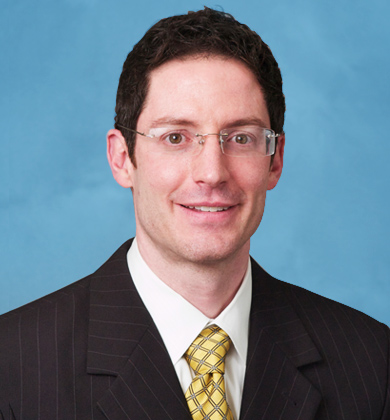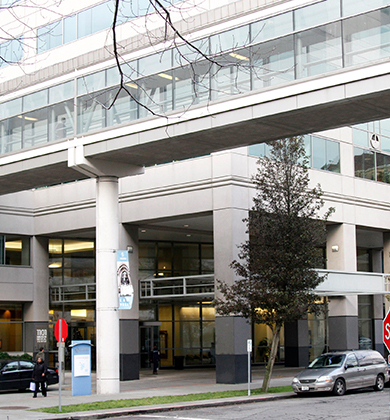Rhinoplasty Surgeon Selection
Once you have consulted with your potential rhinoplasty surgeons the next step is to select your surgeon. One of the most important steps in assuring a gratifying rhinoplasty result is selecting the right surgeon. Rhinoplasty is widely considered among the most challenging of all plastic surgery procedures making it imperative that you focus on finding a surgeon with broad rhinoplasty expertise and a portfolio of consistently successful results.
A good surgeon will also be a patient listener, accomplished communicator and caring provider. While many surgeons fit these criteria, unfortunately there are many others that don't. Finding a surgeon skilled in cosmetic nasal surgery can be difficult, especially given the fact that there is no one reliable method of finding a good surgeon. It is best to investigate your surgeon's credentials and suitability from all available sources. Although this can be a complex endeavor, for most people a well-suited surgeon becomes clear.
Rhinoplasty Surgeon Expectations
Although choosing your rhinoplasty surgeon is a critical part of the rhinoplasty process, no surgeon can guarantee a perfect surgical result. Since rhinoplasty is performed on swollen and distorted tissues, slight cosmetic imperfections are inevitable in virtually any nose, regardless of which surgeon performs the surgery. Even a talented surgeon can not prevent every possible problem, so realist expectations are essential. However, it is well worth the time and resources spent finding the right rhinoplasty specialist who has a track record of satisfied patients. The right surgeon can mean the difference between a beautiful cosmetic and functional improvement to your face and a scarred, distorted, and unattractive nose.
So what should you look for in a Rhinoplasty Surgeon?
There are a several areas that you should investigate when considering which surgeon you should select to perform your rhinoplasty:
- Valid medical license: To legally perform rhinoplasty a valid medical license is required in all 50 states. Determining that your surgeon has an active and unrestricted state medical license indicates that the state medical board has verified the surgeon's medical degree and post-graduate training (minimum of an internship). The state medical board can also provide information regarding disciplinary action against the doctor for malpractice or non-compliance.
- Board Certification: A surgeon who is certified by an American Board of Medical Specialties (ABMS) board (or recognized equivalent) has successfully completed an approved residency program (specialty training after medical school) and then passed a comprehensive oral and written competency examination in their field. Dr. Lamperit is certified by both the American Board of Facial Plastic and Reconstructive Surgery (ABFPRS) and the American Board of Otolaryngology (ABO), which are two of the three boards that cover cosmetic nasal surgery (the third board board being the American Board of Plastic Surgery). It is important to realize that board certification alone in one of these three boards doesn't guarantee surgical proficiency in rhinoplasty. Rather, board certification only indicates a minimum level of knowledge about rhinoplasty at the time of examination. It does not attest to surgical skill, artistic sensibility, extensive surgical experience, or communication skills.
- Before and After Surgical Portfolio: One of the most powerful methods of assessing your potential rhinoplasty surgeon's talent and skill is to review his or her portfolio of before and after rhinoplasty surgery photographs. Most rhinoplasty super-specialists take great pride in their results and work very hard to standardize their photos. This allows surgeons to continue to learn from their results and refine their technique. It also allows you to best assess what changes are possible with rhinoplasty. Providing multiple views of the face (not just profile view) will also allow for a more accurate assessment of the actual cosmetic result. The profile view is probably the most straightforward when it comes to making cosmetic changes, whereas the frontal and base views may not be as forgiving.
Reviewing your surgeon's before and after rhinoplasty photographs also allows you to assess whether you like his or her overall aesthetic. Do all of the noses end up looking the same or are the noses truly tailored to fit each individual's face. Sadly, it isn't uncommon to see some surgeons' results where all of the noses tend to look the same, whether male, female, short, tall, etc. Noses that look the same after rhinoplasty tend to be that way because the surgeon does the same exact maneuvers to the nose as a matter of routine.
Reviewing the results of patients with noses similar to your own is an especially valuable way of assessing your surgeon's ability to correct your specific problems. This is especially reassuring when you see multiple patients with similar deformities who have successful outcomes. It also helps to see before and after photos of patients with problems different from your own as this further supports your surgeon's rhinoplasty skills. Your surgeon's ability to successfully correct badly damaged noses is even more indicative of his or her talent as these complex revision cases are even more challenging than an initial rhinoplasty.
The last thing to keep in mind when reviewing rhinoplasty before and after results is whether the after photos truly represent long term results. Many surgeons don't mention how far out from surgery the after photos is taken. You generally want to see after results that are taken at least a year after surgery. Photos taken too soon after surgery may look good initially as underlying asymmetries are obscured by the overlying tissue swelling.
- Sub-specialization: Typically, surgeons who specialize in a specific surgical niche tend to have a particular interest and skill in that area. After all, aren't we all drawn to activities for which we have an aptitude or talent? In general, this sub-specialization leads to better and more consistent surgical outcomes. All things being equal it is usually best to find a plastic surgeon who devotes a large part of his or her practice to nasal surgery.
- Word of mouth endorsements and online testimonials: Another avenue to find a high-quality rhinoplasty surgeon is via endorsements from a friend, family member or primary care physician. These first-hand accounts of a positive rhinoplasty experience and surgical outcome are very reassuring. Importantly, make sure you're getting a referral for a rhinoplasty surgeon. A great tummy tuck, breast augmentation or facelift doesn't automatically translate into a great rhinoplasty result.
Online endorsements are another avenue of finding "reviews" of your surgeon. Overall, these forums provide a great avenue for patient education and mutual support. However, the anonymous nature of these postings and the potential for fraud are such that you must take the reviewers' potential motives into account. A single disgruntled patient's review can appear to negate many hundreds of other happy patients.
- Surgeon rapport: After meeting with your potential rhinoplasty surgeon(s) you should decide whether you have a good rapport with him or her. This boils down to whether you feel you can trust your face to the surgeon. Did they fully examine your nose? Do you feel that the surgeon fully answered your questions and concerns?
All of these factors must be weighed and taken into account when selecting your surgeon. Once you've done your research and processed all this information it is time to make the exciting next step and contact your surgeon's office to set up a surgery date.
Thanks for your excellent work with my nose job. It is just what I wanted -- it still looks like me but now the round tip is gone. You did such a great job...
RF - Kirkland, WA View More Patient Testimonials ›Schedule your In-Office or Virtual Consultation with Dr. Lamperti
Thomas Lamperti, MD personally performs all in-office and virtual consultations where you will be able to learn about your customized cosmetic or reconstructive surgery options.



